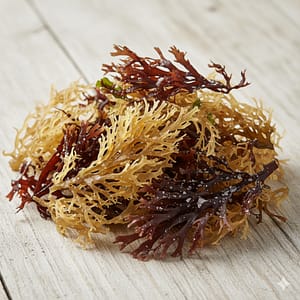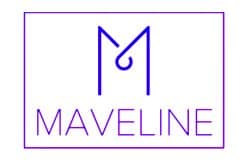- Home
- Carrageen-Producing Seaweeds (Chondrus crispus, Kappaphycus, Eucheuma)

I. General Information
A. Scientific Name:
Chondrus crispus, Kappaphycus spp., Eucheuma spp.
B. Alternative Names:
Irish moss, Carrageen moss, Sea bird’s nest
C. Pronunciation:
Kar-a-geen
II. Sourcing and Origin
A. Source:
Chondrus from the North Atlantic (Ireland, Canada); Kappaphycus & Eucheuma farmed in the Philippines, Indonesia, and East Africa.
B. Geographic Origin:
Chondrus crispus: North Atlantic coasts (Ireland, Canada).
Kappaphycus & Eucheuma: Philippines, Indonesia, Tanzania, and other tropical regions.
C. Method of Processing:
Harvested, sun-dried, and processed into carrageenan extract used as a gelling and thickening agent.
III. Properties and Uses
A. Physical Properties:
Gel-forming polysaccharide
Odorless, tasteless, soluble in hot water
B. Chemical Composition:
Sulfated polysaccharides (carrageenan)
Minerals: calcium, magnesium, potassium
C. Primary Uses:
Skincare: Used in moisturizers and soothing gels.
Haircare: Adds smoothness in shampoos and conditioners.
Wellness: Supports digestive health; prebiotic effects.
Culinary: Thickener in puddings, desserts, dairy products, sauces.
Household: Used in plant-based gels, eco-friendly cleaning products.
D. Key Benefits:
Natural thickener and stabilizer
Vegan substitute for gelatin
Rich in minerals and dietary fiber
IV. Safety and Considerations
A. Potential Allergies:
Rare, but may cause digestive discomfort in sensitive individuals.
B. Best Practices for Use:
Use in small amounts as a thickener in food and cosmetic formulations.
C. Special Precautions:
Excessive consumption may cause bloating or laxative effects.
V. Fun & Educational Facts
A. Historical Context:
Traditionally boiled into puddings and tonics in Ireland and coastal communities.
B. Did You Know?
Carrageenan is one of the most widely used natural food stabilizers worldwide.
C. DIY Recipe Idea:
Carrageen pudding
Plant-based gelatin dessert
Dairy-free ice cream
